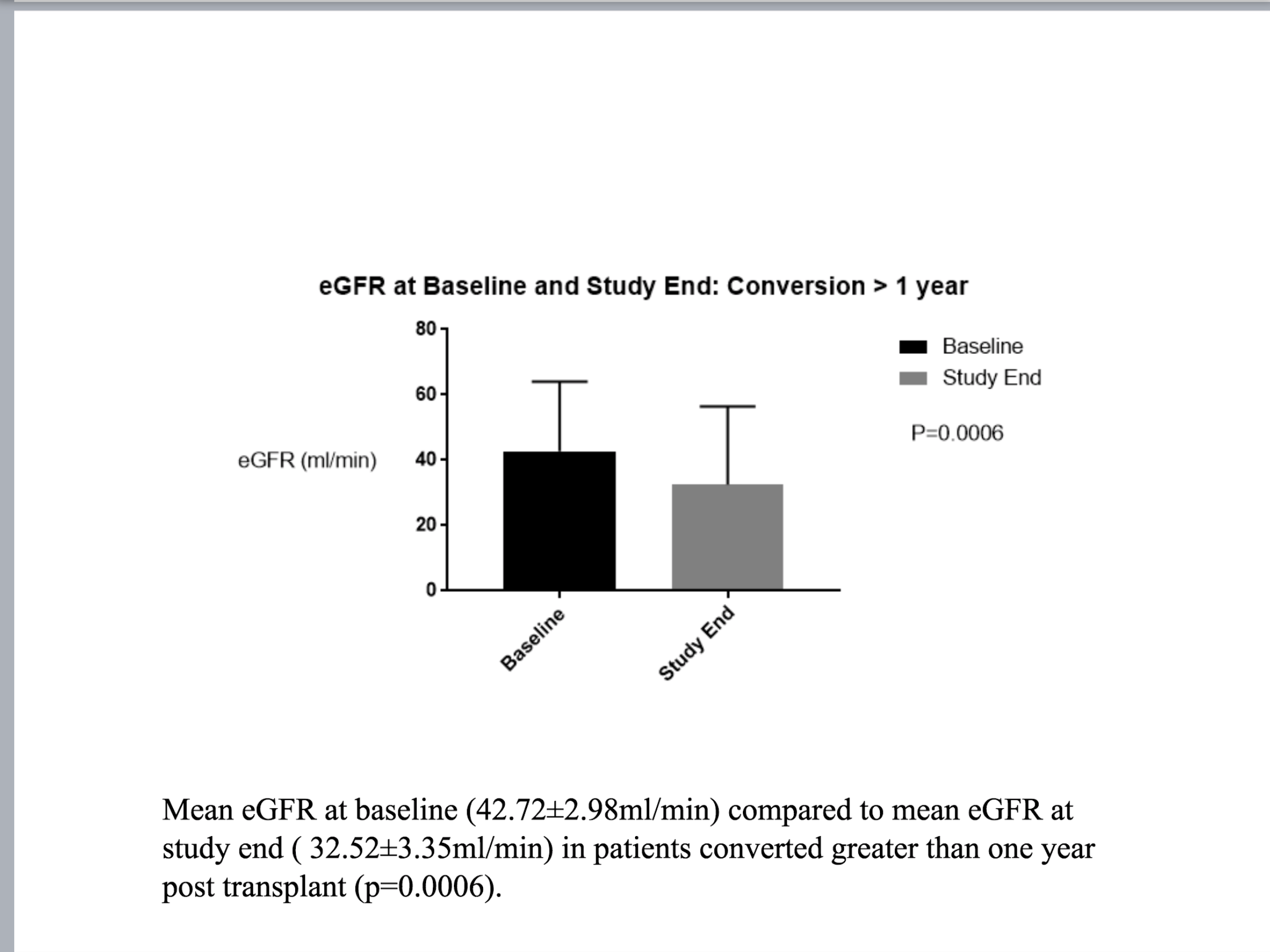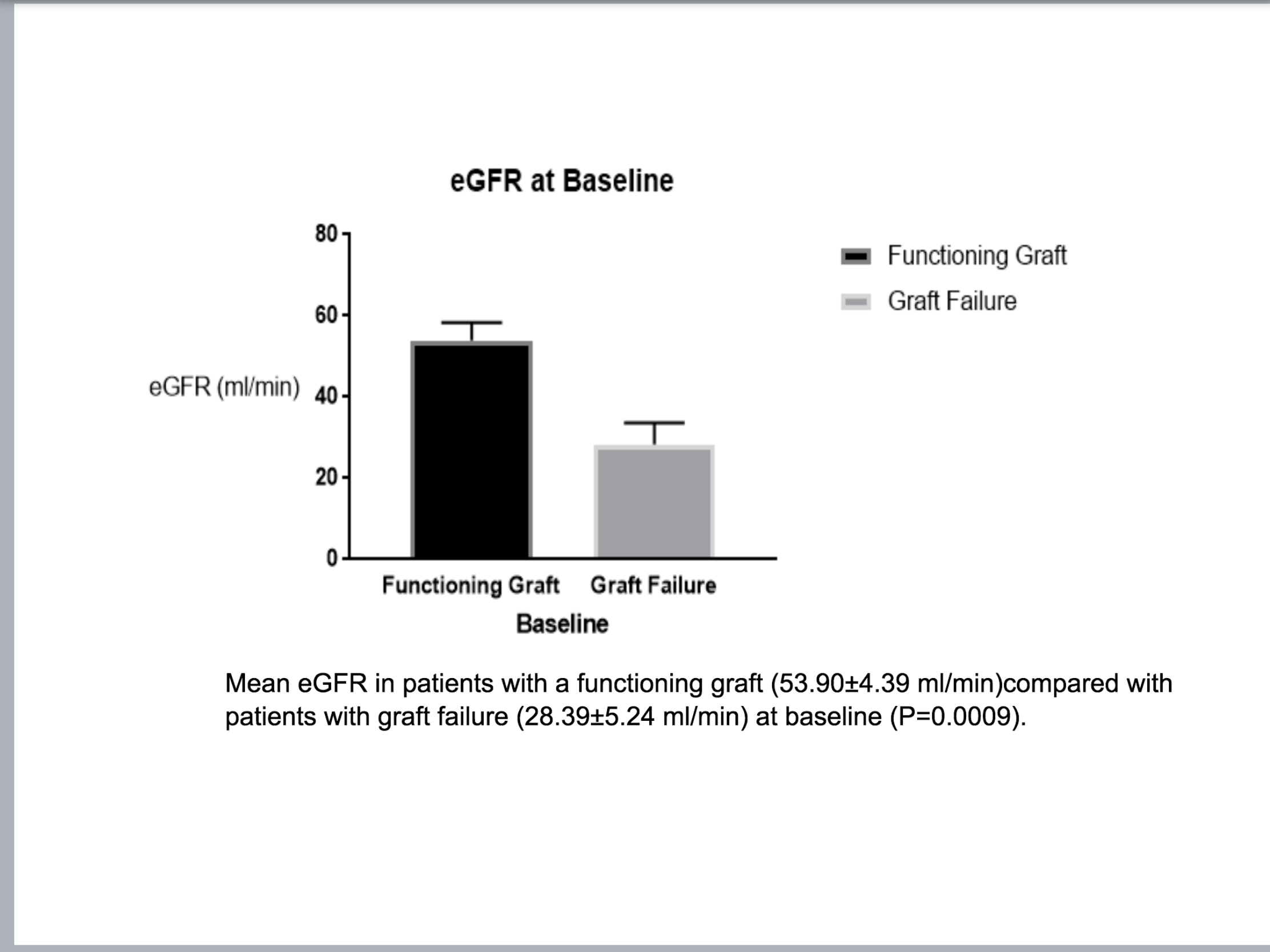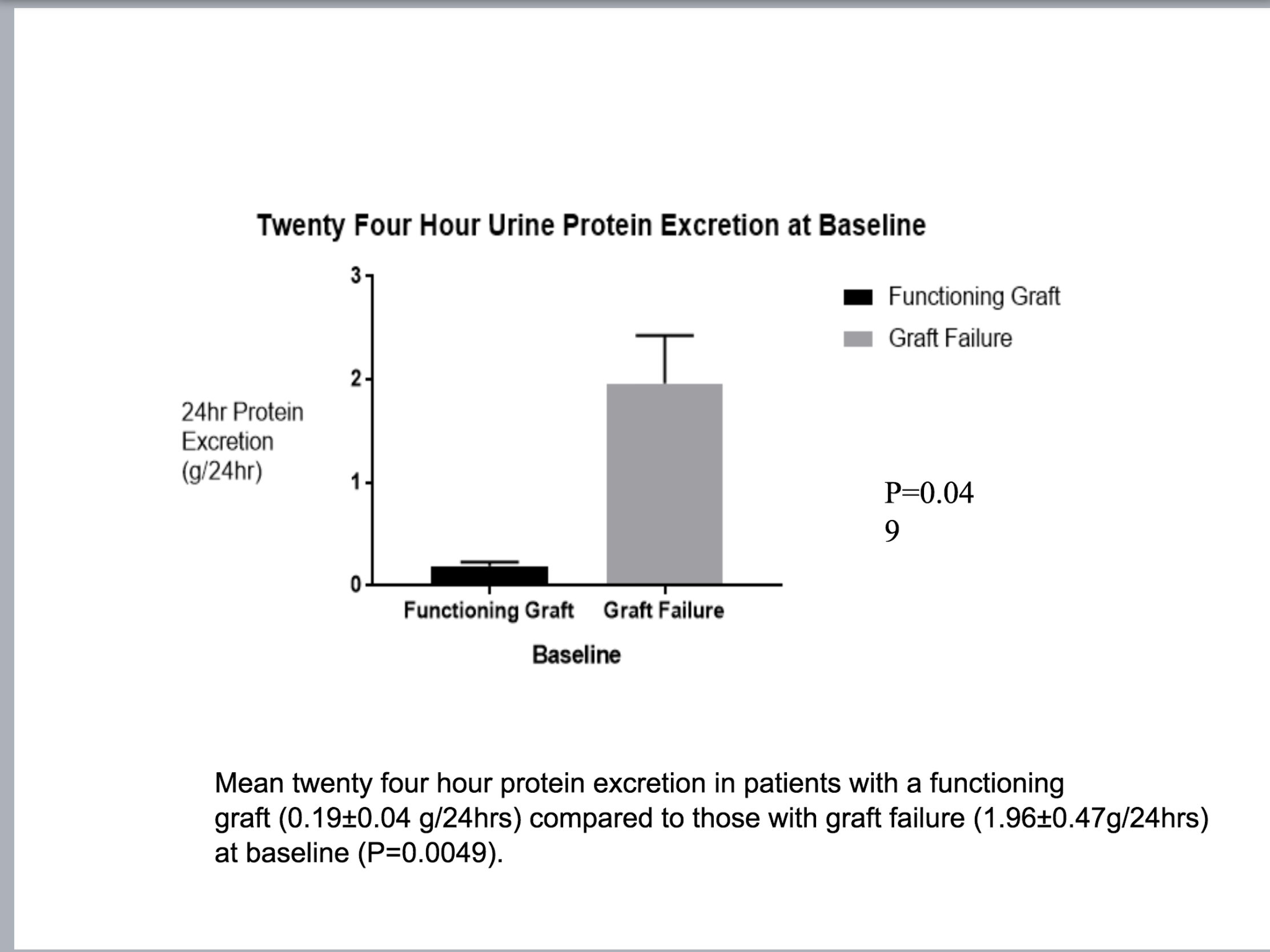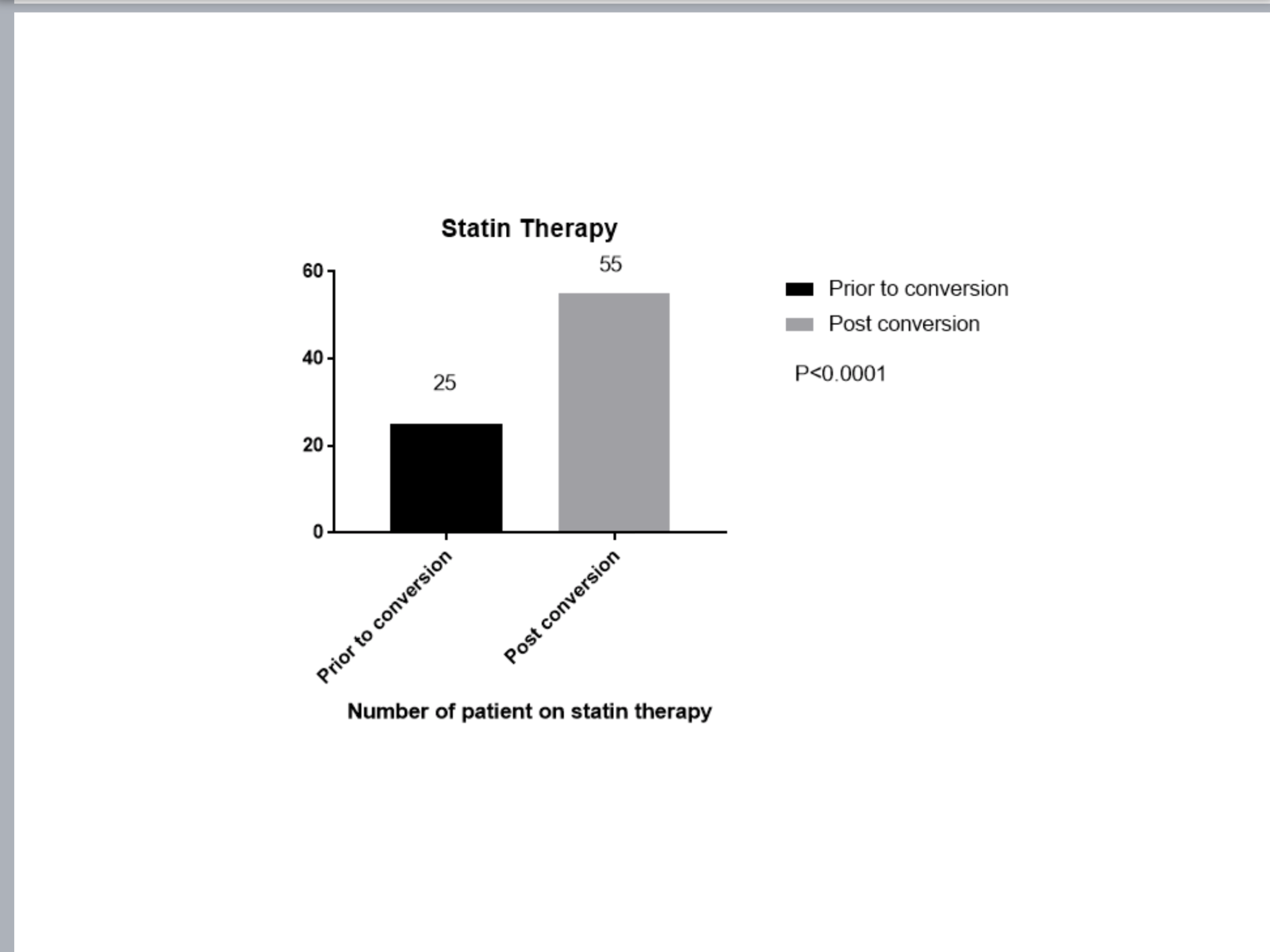Long Term Follow up after Conversion from Calcineurin Inhibitors to Sirolimus in a South African Renal Transplant Population
Bhavisha Parag1, Alain Guy Assounga1.
1Department of Nephrology , University of KwaZulu-Natal and Inkosi Albert Luthuli Central Hospital , Durban, South Africa
Background: Conversion of calcineurin inhibitors to sirolimus has been studied extensively with positive outcomes. A previous study at our institution had shown that early conversion to sirolimus resulted in improvement in renal function and low proteinuria. We performed a further retrospective audit on renal transplant patients switched to sirolimus at Inkosi Albert Luthuli Central Hospital from June 2003 till June 2017.
Methods: Medical records of transplant recipients switched to sirolimus from calcineurin inhibitors following a calcineurin-related complication were analyzed. Twenty four hour urine protein excretion, estimated glomerular filtration rates (eGFR) and cholesterol were analysed at the time of conversion and periodically till study end (last clinic visit). Descriptive statistical methods and logistic regression analysis were applied.
Results: Sixty six patients of which 45 males and 21 females were included in the study. Results were expressed as a mean ± SEM. The mean age was 53.39 ±1.64 years. Average follow up time was 67.35 ± 6.35 months. Patients were divided into four groups ( group 1- Alive with a functioning graft ( n=22), group 2- Graft failure(n=13), group 3- Died(n=14), group 4- Lost to follow up(n=17) ). Mean eGFR at baseline compared to the mean eGFR at study end in patients converted less than one year post transplant (n=15),were 52.58±5.72ml/min and 55.94±8.09ml/min respectively (p=0.59). Mean eGFR at baselines compared to mean eGFR at study end in patients converted greater than one year post transplant (n=51), were 42.72±2.98ml/min and 32.52±3.35ml/min respectively (p=0.0006). Mean eGFR in patients with a functioning graft compared with patients with graft failure at baseline were 53.90±4.39 ml/min and 28.39±5.24 ml/min respectively (P=0.0009).
Mean eGFR in patients with a functioning graft compared with patients with graft failure at baseline were 53.90±4.39 ml/min and 28.39±5.24 ml/min respectively (P=0.0009).  Mean twenty four hour urine protein excretion in patients with a functioning graft compared to those with graft failure at baseline were 0.19±0.04 g/24hrs and 1.96±0.47g/24hrs respectively (P=0.0049).
Mean twenty four hour urine protein excretion in patients with a functioning graft compared to those with graft failure at baseline were 0.19±0.04 g/24hrs and 1.96±0.47g/24hrs respectively (P=0.0049). Twenty five patients were on statin at baseline. At study end 55 patients in total required statin therapy (p<0.0001).
Twenty five patients were on statin at baseline. At study end 55 patients in total required statin therapy (p<0.0001).
Conclusion: Patients converted less than one year post transplant showed no decline in eGFR. Patients converted less than one year post transplant had a slightly better eGFR at the end of the study compared to baseline but this was not statistically significant. Patients converted more than one year post transplant showed a significantly lower eGFR at study end.The eGFR at baseline prior to conversion determined late graft survival.Patients with a low 24 hour urine protein excretion at baseline had a better graft survival. Significantly more patients required statin therapy when converted to sirolimus.
